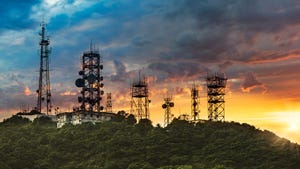April 11, 2024

The four companies have been jointly conducting R&D on sub-terahertz devices since 2021 in anticipation of the coming 6G era, we’re told. Tests of the jointly developed wireless device have achieved 100 Gbps transmissions in the 100 GHz and 300 GHz bands at distances of up to 100 meters.
By way of comparison, the announcement states that 100 Gbps is approximately 20 times faster than the maximum 4.9 Gbps data rate of current 5G networks.
In terms of who brought what to the party in this project, DoCoMo developed wireless transmission equipment capable of transmitting data rates equivalent to 100 Gbps at a distance of 100 meters, while NTT developed a ‘top-level wireless device’ capable of transmitting 100 Gbps per channel at a distance of 100 meters in the 300 GHz band.
What is meant by ‘top level’ in this context can be explained by an accompanying footnote:
This assumes that as of March 2024, no other entity has announced 1) achievement of 100 Gbps transmission over a distance of 100 meters in the 100 GHz band (according to NEC); 2) achievement of 100 Gbps transmission over a distance of 100 meters in the 300 GHz band (according to NTT); and 3) achievement of an equivalent isotropic radiation power (EIRP) of 50 dBm and a beam steering angle of approximately ±30 degrees using 100 or more APAA elements in the 100 GHz band (according to NEC).
Meanwhile NEC developed a multi-element active phased array antenna (APAA) consisting of more than 100 antenna elements, and Fujitsu achieved the world's highest power efficiency in a high-output amplifier, apparently.

“In the 6G era, when wireless networks are envisioned supporting diverse applications ranging from ultra-HD video streaming to real-time control in autonomous vehicles, as well as increasing communication demands, high-capacity wireless communication is expected to be achieved by exploiting the abundant bandwidth available in the sub-terahertz band from 100 GHz to 300 GHz,” states the release.
“However, compared to 28 GHz and other millimeter bands used in current 5G systems, the much higher frequencies of the sub-terahertz band will require entirely different wireless devices that are now being developed from scratch. To be successful, this effort will need to overcome several key challenges, such as determining the specific performance requirements of wireless devices operating in the sub-terahertz band, and then actually developing such devices.”
Following this project, the four companies will continue to conduct ‘extensive R&D’ into sub-terahertz telecommunications, in order to contribute to 6G standardization, we’re told.
About the Author(s)
You May Also Like








.png?width=300&auto=webp&quality=80&disable=upscale)


_1.jpg?width=300&auto=webp&quality=80&disable=upscale)


.png?width=800&auto=webp&quality=80&disable=upscale)